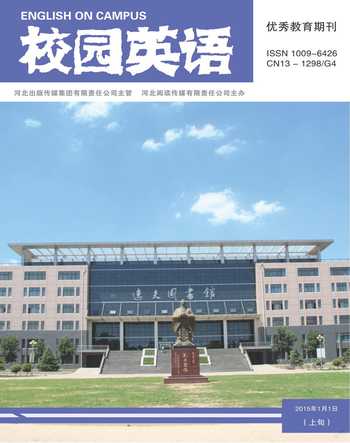The Correlation between Teacher Feedback and Learner Motivation in Language Learning among non—English Majors
魏发国
【Abstract】This paper centers on the correlation between teacher feedback and learner motivation in language learning among English majors.Quantitative research is employed in this study.100 non-English majors and 20 teachers participated in the study.The major finding is that there is a significant positive correlation between teacher feedback and learner motivation in language learning among non-English majors.
【Key words】teacher feedback; learner motivation; language learning; English majors
Chapter One Introduction
Learners remains different in motivations, personalities, and attitudes in language learning.They are possible to be driven by their needs and motivations (Skehan, 1989).What teachers address and how they behave in classroom have significant impacts on learner motivations in language learning.Teachers tend to comment on learner performance or correct their errors by providing feedback, which has been proved to beneficial to learner motivation in learning a second foreign language.
Chapter Two Literature Review
Motivation refers to a force or a factor which can influence people s behavior.No single individual difference factor in language learning has received as much attention as motivation (Dorney, 2001).Gardner is considered as one of the most important researchers in the field of motivation to learn a target language.According to Gardner (1959), the motivation to learn the language of other community is primary force which takes responsibility for enhancing or hindering intercultural communication and affiliation.In general, motivation can be classified into intrinsic motivation and extrinsic motivation.Theorists define intrinsic motivation in terms of what people will do without external inducement.Extrinsic motivation is defined as the motivation to engage in an activity as a means to an end (Alexander & Deci, 2000).Feedback in education refers to the information given by teachers to language learners in classroom.It demonstrates the attitudes of teachers towards learners performance in class.Teaching and learning can be regarded as a whole process, in which they are in close relation to each other.Teachers are considered both as sources and receivers of feedback, because teacher feedback is given to learners on their language learning, and teachers receive feedback from students regarding their instructions.
Chapter Three Methodology
The present study was conducted in context of language learning.Participants, complete with 100 non-English majors and 20 teachers, participated in the study.Questionnaires regarding teacher feedback and learner motivation were distributed to participates.At the beginning of tests, the purpose of the study was clearly explained to both teachers and students.Based on their responses, quantitative data were further computed and analyzed with Pearson Correlation Coefficient.In doing so, two things remain to be explored: whether their exists a relationship between two variables; if there exists the relationship, how strong or weak the relationship is.
Chapter Four Results
Pearson correlation coefficient was calculated for the relationship between teacher feedback and learner motivation among non-English majors.The results demonstrated a significant weak correlation (r (120) = .657.p < .05 ), which indicated that there was a significant moderate relationship between teacher feedback and learner motivation among non-English majors.That is to say, teachers are supposed to improve their feedback skills and techniques so as to enhance learner motivation of language learning.
Chapter Five Conclusion
The present study demonstrates that there exist a significant moderate relationship between teacher feedback and learner motivation, which means that teachers are supposed to provide more effective feedback, in the hope of achieving a satisfying teaching effectiveness in language classroom.
References:
[1]Alexander, P., & Deci, E.(2000).Intrinsic and Extrinsic Motivations: Classic Definitions and New Directions.Contemporary Educational Psychology, 25(1), p.243-251.
[2]Dorney, Z.(2001).Teaching and Researching Motivation.England: Pearson Education- Longman.
[3]Gardner, R.C.(1959).Motivational variables in second-language acquisition.Canadian Journal of Psychology, 13(2), p.266-272.
[4]Skehan, P.(1989).Individual Differences in Second- Language Learning.New York: Arnold.

